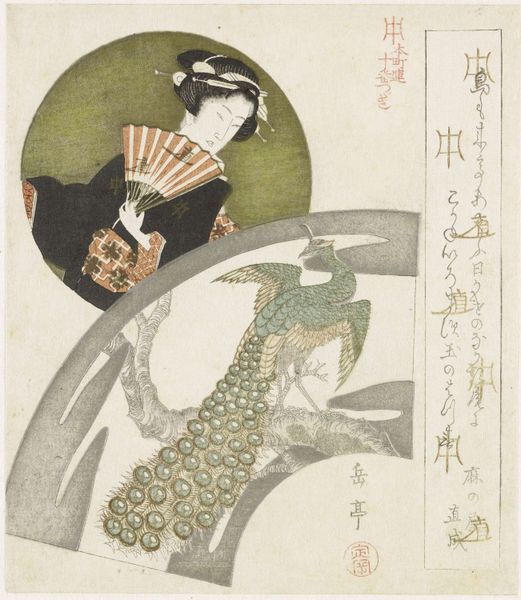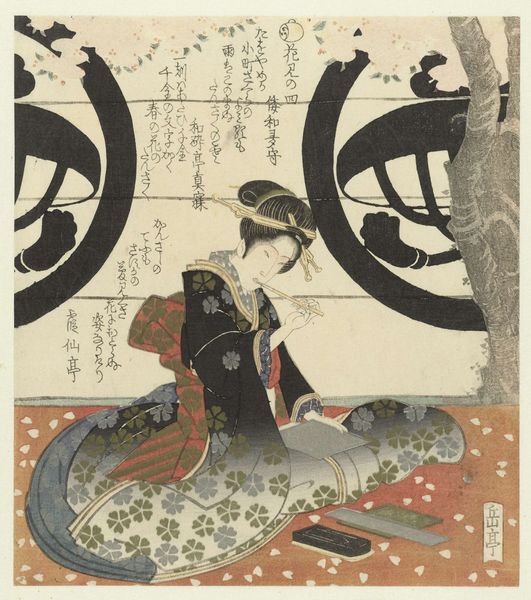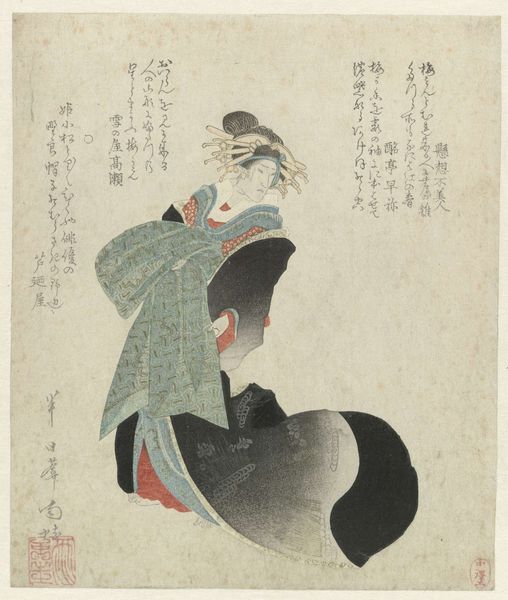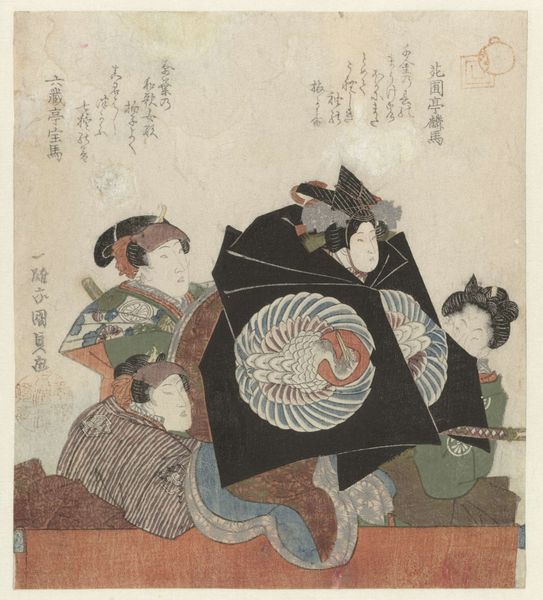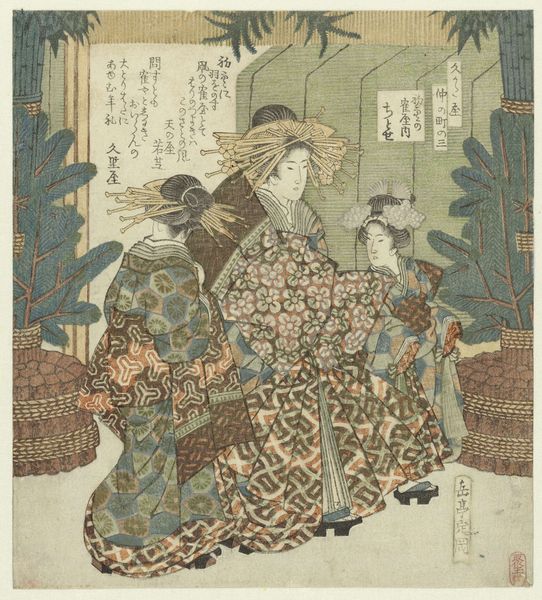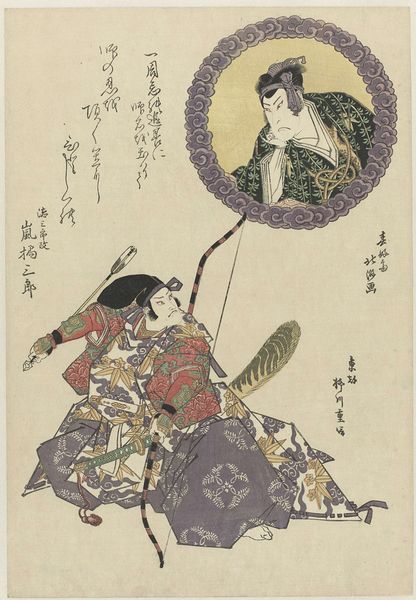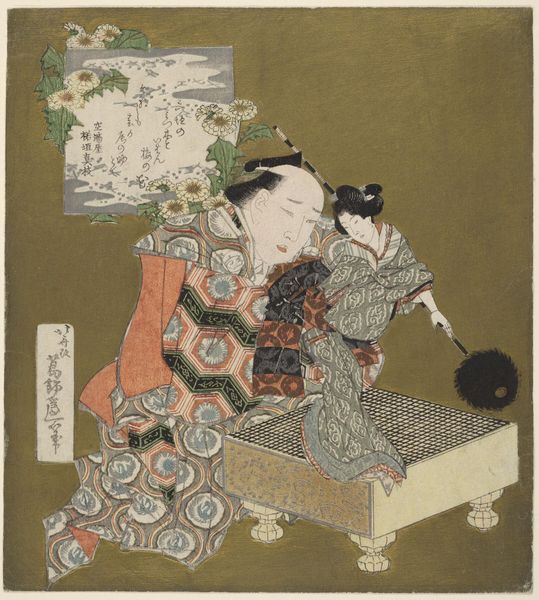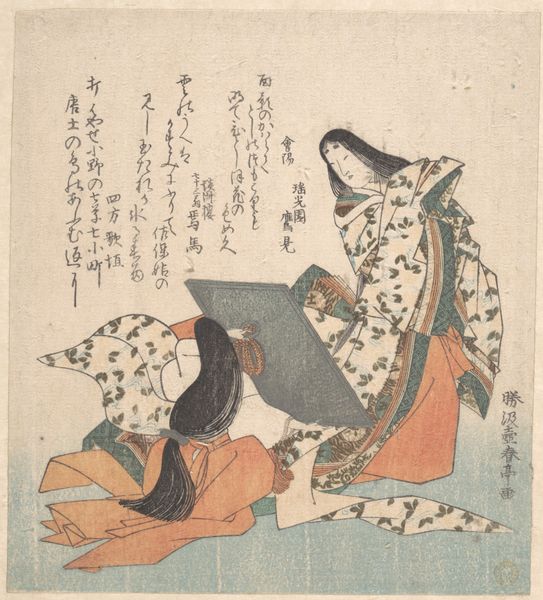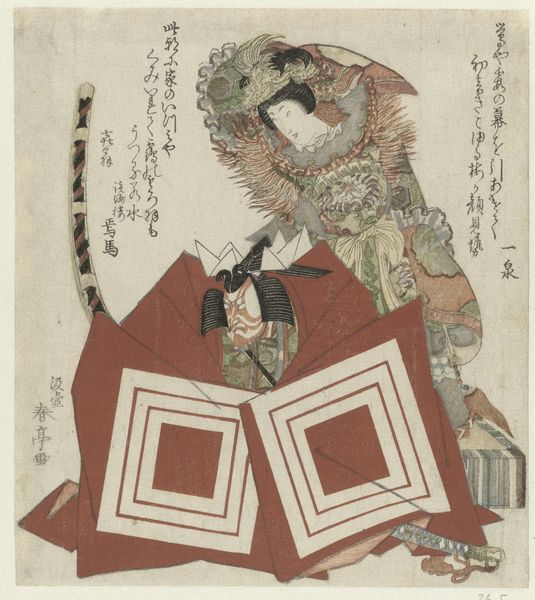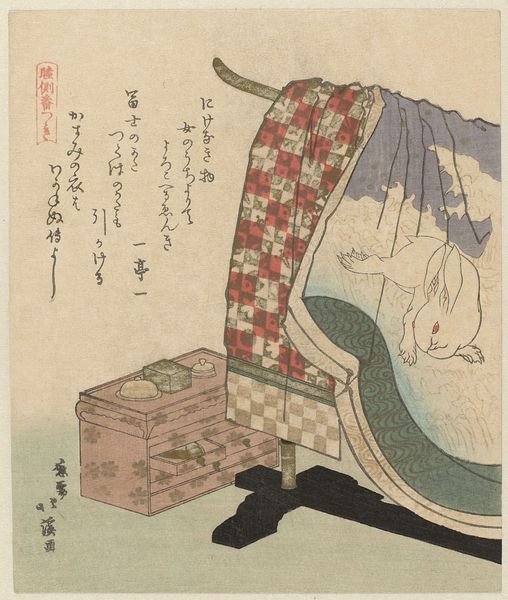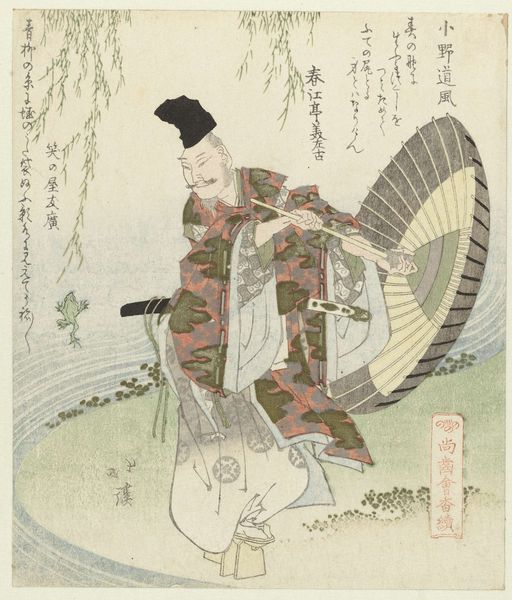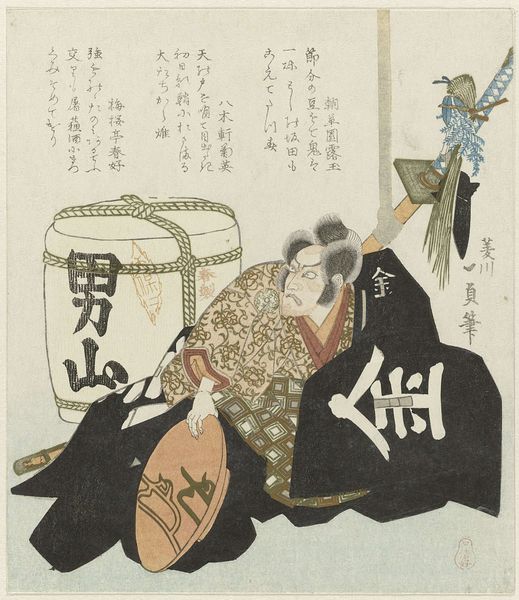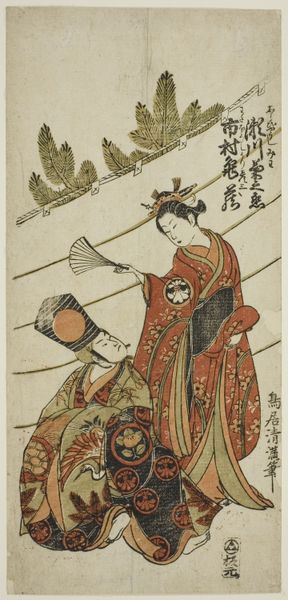
Dimensions: height 204 mm, width 186 mm
Copyright: Rijks Museum: Open Domain
Editor: We're looking at "Geisha and Peacock on Plum Tree," a woodblock print by Yashima Gakutei, created sometime between 1868 and 1912. There's something very serene about it. A geisha partially framed by a circle, then a peacock in a fan shape – it’s quite an intriguing composition. What strikes you most about this piece? Curator: I'm fascinated by the juxtaposition of the geisha and the peacock. It encourages us to think about the constructed nature of identity. The geisha, often seen as embodying ideals of femininity and artistry, exists within very rigid social structures. Do you see how the peacock, a symbol of beauty and pride, is also constrained by the decorative frame of the fan? Editor: I see that. It's like they're both symbols within a symbol. Does that reflect a broader commentary? Curator: Absolutely. Consider the Edo period in Japan. There were strict social hierarchies and expectations, particularly for women and those in the entertainment industry. Gakutei is cleverly using ukiyo-e, or "pictures of the floating world," a genre known for depicting pleasure and beauty, to subtly question those very constructs. What do you think the plum blossoms in the background add to this conversation? Editor: I hadn’t thought about the plum blossoms. Maybe they're symbols of resilience, because they bloom even in the cold? Does that suggest the enduring strength of those living within restrictive roles? Curator: Exactly! It invites us to consider the complex interplay between societal expectations and individual agency, making this print a poignant reflection on the lives of women, artists, and even the natural world within a specific historical and cultural context. It makes you wonder about their narratives. Editor: That really reframes how I see the piece. I initially just saw a pretty picture, but now I see a quiet form of social commentary woven into the artistry. Curator: Precisely. And that is the power of art – to prompt questions, challenge norms, and connect us to broader social and political narratives.
Comments
No comments
Be the first to comment and join the conversation on the ultimate creative platform.
